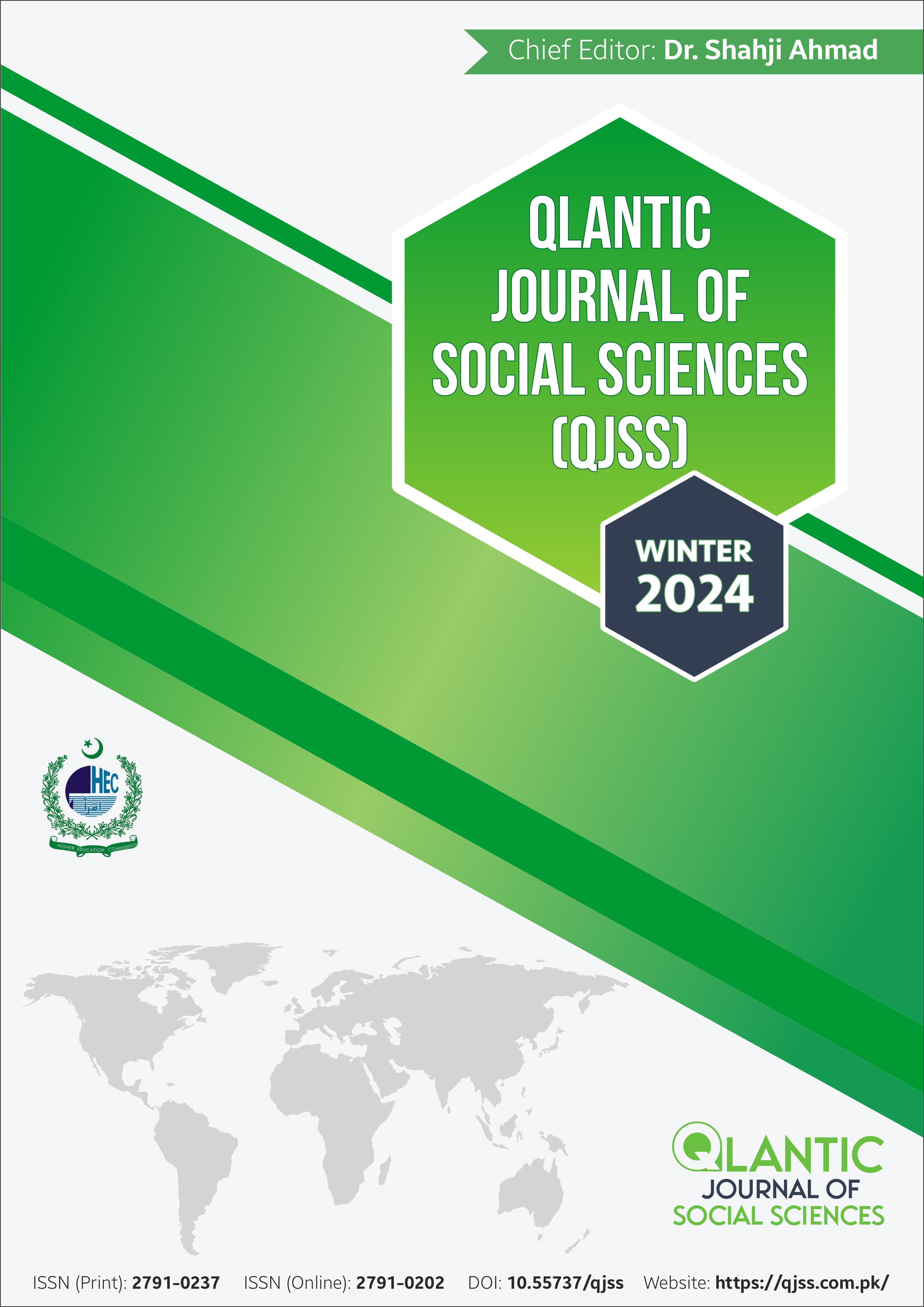Learning Elementary Science through Technology: Conceptualization of Usage of Videos By Students
DOI:
https://doi.org/10.55737/qjss.722037295Keywords:
Science Teaching, Science Learning, Technology, Videos, StudentsAbstract
Video Based Learning (VBL) is one of the most unique ways of making learning as a fun. Effective and attractive. Video-based learning is considered an effective way and strategy for teaching science as this subject is being taught traditionally through the chalk and talk and lecture method. The main focus of the study were to find out the effectiveness of the practice of Video-based learning in the elementary science classrooms. This study was carried out at one of the elementary schools of the Sukkur Sindh. The design was qualitative in nature. The population of the study was all students of grade 8 who are 27. Unstructured interviews were used as a research tool. By adopting convenience sampling ten elementary-level students were selected. Thematic analysis was used as data analysis technique. The findings of the study revealed that Video-based learning in science makes learning easy, effective, retentive. It creates an active classroom environment, which is needed in this modern era. This study concluded that teachers do not use videos in their classroom practices, resulting in students and teachers taking this subject a little bit more difficult. It was concluded that video-based learning is an effective way of learning.
References
Allgaier, J. (2012). On the shoulders of YouTube. Science Communication, 35(2), 266-275. https://doi.org/10.1177/1075547012454949
Bartolomé, A., García-Ruiz, R., & Aguaded, I. (2017). Blended learning: Panorama Y perspectivas. RIED. Revista Iberoamericana de Educación a Distancia, 21(1), 33. https://doi.org/10.5944/ried.21.1.18842
Brame, C. J. (2015). Effective educational videos. Recuperado de http://cft.vanderbilt.edu/guides-sub-pages/effective-educational-videos
Brame, C. J. (2016). Effective educational videos: Principles and guidelines for maximizing student learning from video content. CBE—Life Sciences Education, 15(4), es6. https://doi.org/10.1187/cbe.16-03-0125
Dong, C., & Goh, P. S. (2014). Twelve tips for the effective use of videos in medical education. Medical Teacher, 37(2), 140-145. https://doi.org/10.3109/0142159x.2014.943709
Grünewald, F., Meinel, C., Totschnig, M., & Willems, C. (2013). Designing MOOCs for the support of multiple learning styles. Lecture Notes in Computer Science, 371-382. https://doi.org/10.1007/978-3-642-40814-4_29
Ibrahim, M., Antonenko, P. D., Greenwood, C. M., & Wheeler, D. (2011). Effects of segmenting, signalling, and weeding on learning from educational video. Learning, Media and Technology, 37(3), 220–235. https://doi.org/10.1080/17439884.2011.585993
James, T., Michael Reed, W., Wells, J. G., & Dombrowski, L. A. (1999). The effects of online multimedia project development, learning style, and prior computer experiences on teachers’ attitudes toward the internet and hypermedia. Journal of Research on Computing in Education, 31(4), 341–355. https://doi.org/10.1080/08886504.1999.10782259
Lawson, T. J., Bodle, J. H., & McDonough, T. A. (2007). Techniques for increasing student learning from educational videos: Notes versus guiding questions. Teaching of Psychology, 34(2), 90–93. https://doi.org/10.1080/00986280701291309
Lawson, T. J., Bodle, J. H., Houlette, M. A., & Haubner, R. R. (2006). Guiding questions enhance student learning from educational videos. Teaching of Psychology, 33(1), 31–33. https://doi.org/10.1207/s15328023top3301_7
Majekodunmi, N., & Murnaghan, K. (2012). "In our own words": Creating videos as teaching and learning tools. Partnership: The Canadian Journal of Library and Information Practice and Research, 7(2). https://doi.org/10.21083/partnership.v7i2.2007
O'Hagan, C. (1995). Custom videos for flexible learning. Innovations in Education and Training International, 32(2), 131–138. https://doi.org/10.1080/1355800950320207
Paas, F. G., & Van Merriënboer, J. J. (1994). Instructional control of cognitive load in the training of complex cognitive tasks. Educational Psychology Review, 6(4), 351-371. https://doi.org/10.1007/bf02213420
Saxena, V., Natarajan, P., O'Sullivan, P. S., & Jain, S. (2008). Effect of the use of instructional anatomy videos on student performance. Anatomical Sciences Education, 1(4), 159–165. https://doi.org/10.1002/ase.38
Sinha, T., Jermann, P., Li, N., & Dillenbourg, P. (2014). Your click decides your fate: Inferring information processing and attrition behavior from MOOC video Clickstream interactions. Proceedings of the EMNLP 2014 Workshop on Analysis of Large-Scale Social Interaction in MOOCs. https://doi.org/10.3115/v1/w14-4102
Tucker, C. (2012). Common core standards: Transforming teaching with collaborative technology. Teacher Librarian, 40(1), 30. https://guidedreadingtechtools.weebly.com/uploads/2/1/2/8/21280278/common_core_standards_transforming_teaching_with_collaborative_technology.pdf
Yung, H. I., & Paas, F. (2015). Effects of cueing by a pedagogical agent in an instructional animation: A cognitive load approach. Journal of Educational Technology & Society, 18(3), 153. https://www.jstor.org/stable/jeductechsoci.18.3.153




